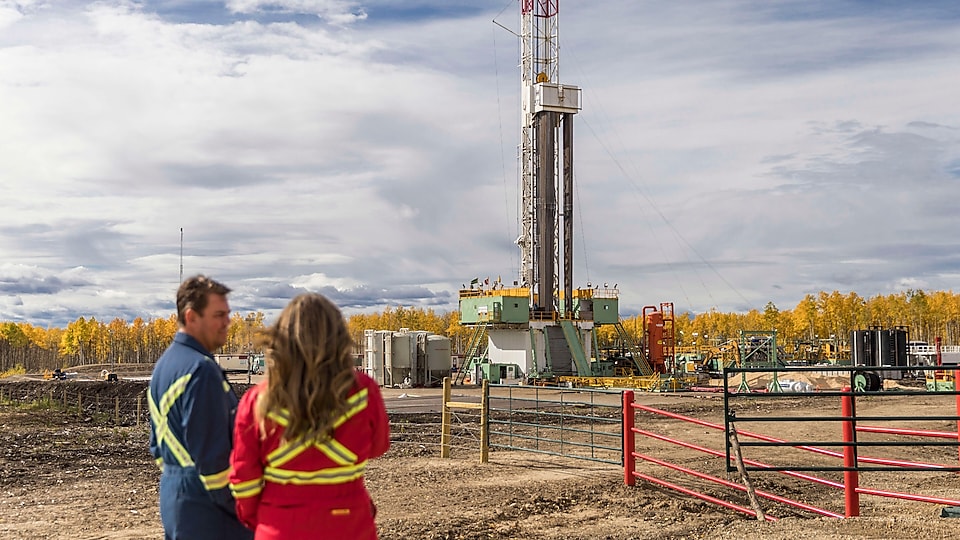
A retro-fit to reduce emissions
Nov. 28, 2018
Shell is launching a program to reduce methane emissions by changing out old valve actuators in the Groundbirch field in northeast British Columbia (B.C.).

Methane is a greenhouse gas (GHG) that can be more potent than CO2 when released to the atmosphere, and an area where Shell is taking steps to make improvements.
“Though natural gas is the cleanest burning hydrocarbon, to ensure we get the best environmental benefit from it, we have to carefully manage methane emissions,” says Kyla Cox, a process engineer who works with unconventional gas operations across Canada.
In early 2018 a Shell project team working at Shell’s Groundbirch asset set a goal to reduce the methane emissions from new well pads. Electric powered actuators that work to open and close valves were introduced as the solution. These actuators do not run on, or vent, methane and will be used on future wells in the Groundbirch field.
But what about eliminating methane venting from valve actuators on the more than 500 existing Shell wells operating in Groundbirch? The answer to this question is one Kyla has been working towards with her team.
The Project
“It’s not as easy as one might think to simply replace them all,” says Kyla. “Each generation of well pad is a bit different and we have a variety of well pad designs in our field as a result of making tweaks and improvements over the years. For example, some well pads run on solar power, while others run on thermo-electric power, each with different power output.”
Kyla explains that in 2016 Shell submitted a project application to B.C.’s Provincial Clean Infrastructure Royalty Credit Program (CIRCP) which was subsequently approved. To support GHG reduction solutions connected to natural gas production in B.C., the government program offers royalty payment deductions to companies with eligible projects.
“The initial project aimed to reduce methane emissions by retro-fitting valve actuators on existing well pads in the Groundbirch field so that they are run on air from an air compressor, like a typical tire pump, rather than compressed natural gas. This avoids venting methane to the atmosphere during the valve operation,” says Kyla.
A trial completed in May 2018 produced valuable learning for the team.
“We tested our existing kit with the new equipment in the environmental conditions of northeast B.C., and in the end, reliability became a concern,” says Kyla. “We decided to change course.”
The team turned their attention to another option – the electric actuators that are successfully working on newly designed ‘Generation 4’ Groundbirch well pads.
“Our trial was originally designed before we tested the electric actuators on our pads and we weren’t able to factor in that information,” Kyla explains. “Making adaptations in order to get something right is the nature of our work, and now that we have reliable data, we are confident electric actuators can be used for the retro-fit in most cases.”
Shell and Emissions Reduction
Canada’s abundant and responsibly produced natural gas can help the world transition to a lower carbon energy system . Kyla’s methane reduction project is an example of how Shell is finding inventive ways to provide more and cleaner energy solutions to Canada and the world.
Shell recently announced a global target to maintain methane emissions intensity below 0.2% by 2025 which covers all oil and gas assets for which Shell is the operator. Shell operations in Canada, and specifically in northeast B.C., are already below this target.
Each of Shell’s shale assets leverages their own unique GHG asset management plans to identify relevant emissions reduction opportunities. The plans, projects and knowledge are shared across the organization to promote best practices in pursuit of further improvements.
“I feel the work we do is about demonstrating environmental responsibility and ultimately earning our right to grow,” says Kyla. “I am proud that our company cares about our environmental footprint and is taking action.”
Starting in 2018, retro-fits to incorporate electric actuators and reduce methane emissions on existing well pads will be implemented in Shell’s Groundbirch field using a phased approach until 2022.
About Shell’s Groundbirch Asset
Celebrating 10 years of operations in 2008, Shell’s Groundbirch asset is located in northeast British Columbia near Fort St. John and consists of four natural gas processing plants and more than 500 producing wells. In managing this asset, Shell adheres to principles for producing tight/shale oil and gas , which cover safety, air quality, water protection and usage, land use, and engagement with local communities.
more in about us
Alberta Shales
We produce light tight oil (LTO) from the Montney shale formation in northwestern Alberta in Gold Creek. On February 17, 2021, Shell announced the sale of our Duvernay assets to Crescent Point Energy Corp.
Groundbirch
Produces methane, natural gas liquids and condensate and could provide Shell’s equity share of natural gas to LNG Canada.

